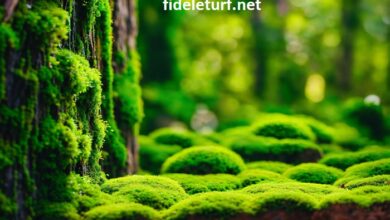How to Use Tuff in Minecraft: A Guide for Builders and Explorers

Tuff is a new type of stone that was added to Minecraft in the Caves & Cliffs update. It is a light grey block that has a slightly greenish tint and a rough texture. Tuff is formed from volcanic ash in real life, and can be found in the game below Y=16, where it generates in blobs or veins along with other rare ores. In this blog post, we will explore what tuff can do, where to find it, and how to use it in your builds.
What Does Tuff Do?
Tuff is mainly a decorative block that can be used to create interesting patterns and contrasts with other blocks. It has a blast resistance value of 6 and a hardness value of 1.5, which means it can withstand explosions and can be mined with any kind of pickaxe. Tuff does not have any special properties or uses, such as crafting recipes or redstone interactions. However, it can be used to mark time, as it is laid down quickly when a volcano erupts. This means that if you find tuff in your world, you can estimate how old the surrounding rocks are.
Where to Find Tuff?
Tuff can be found in the Overworld, in the form of ore blobs or veins. Tuff attempts to generate 2 times per chunk in blobs of size 0-864, from elevations -64 to 0, in all biomes. Tuff can replace stone, andesite, diorite, granite, polished andesite [ BE only], polished diorite [ BE only], polished granite [ BE only], and deepslate. Any ore that generates in tuff becomes its deepslate variety. Additionally, tuff can generate in an ore vein that consists of iron ore below Y=0.
To find tuff, you will need to dig deep underground, preferably with a good pickaxe and some torches. You can also use a beacon with the Haste effect to speed up your mining. You can also look for caves or ravines that expose the lower layers of the world, where tuff is more likely to spawn. You can also use the /locate command to find the nearest ore vein feature, which may contain tuff.
How to Use Tuff in Your Builds?
Tuff is a versatile block that can be used for various purposes in your builds. Here are some ideas on how to use tuff in your creations:
- Use tuff as a flooring or wall material for your underground bases or dungeons. Tuff can create a dark and mysterious atmosphere, especially when combined with other blocks like deepslate, blackstone, or obsidian.
- Use tuff as a contrast or accent block for your structures. Tuff can complement other blocks like stone bricks, cobblestone, or concrete. You can also use tuff to create borders or outlines for your buildings.
- Use tuff as a landscaping or terraforming element for your worlds. Tuff can simulate volcanic ash or rocks, and can be used to create realistic or fantasy landscapes. You can also use tuff to create craters, mountains, or islands.
- Use tuff as a historical or archaeological marker for your worlds. Tuff can indicate the age of the rocks or structures around it, and can be used to create ancient ruins or monuments. You can also use tuff to create puzzles or secrets for your players to discover.
Conclusion
Tuff is a new block that was added to Minecraft in the Caves & Cliffs update. It is a light grey block that has a slightly greenish tint and a rough texture. Tuff is formed from volcanic ash in real life, and can be found in the game below Y=16, where it generates in blobs or veins along with other rare ores. Tuff is mainly a decorative block that can be used to create interesting patterns and contrasts with other blocks. It has a blast resistance value of 6 and a hardness value of 1.5, which means it can withstand explosions and can be mined with any kind of pickaxe. Tuff does not have any special properties or uses, such as crafting recipes or redstone interactions. However, it can be used to mark time, as it is laid down quickly when a volcano erupts.
We hope you enjoyed this blog post about tuff in Minecraft. If you have any questions or feedback, please leave them in the comments section below. Thank you for reading!




